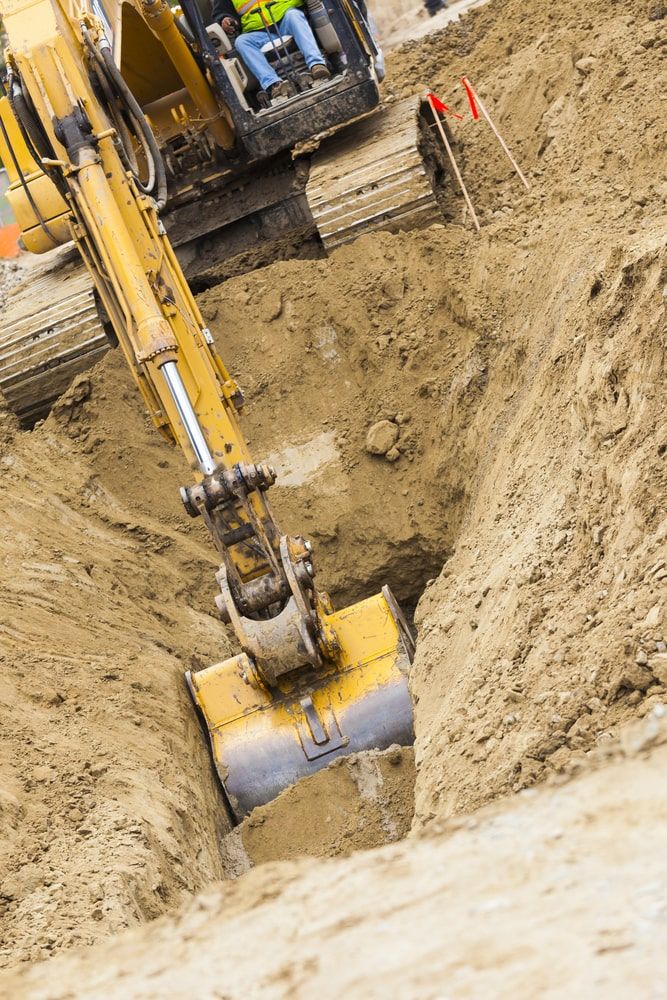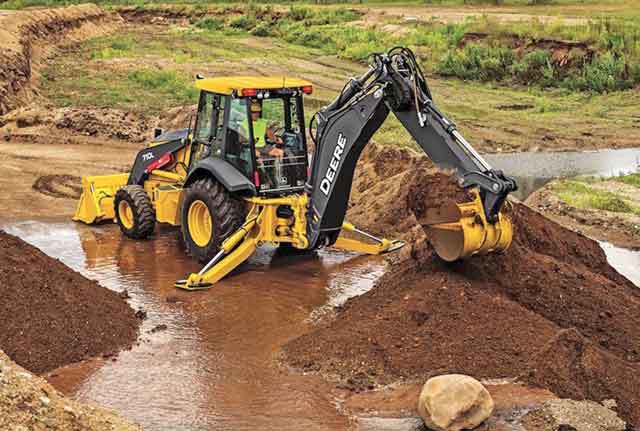Excavating Ohio - Leading Excavation Specialists for Ohio Projects
Revealing the Art of Excavation: Pro Tips for Safe and Efficient Digging
As dirt is turned and planet is moved, the intricacies of excavation reveal themselves, demanding an eager understanding of equipment, soil composition, security procedures, and environmental factors to consider. The proficiency needed to browse these components effectively can imply the difference between an effective excavation project and a prospective catastrophe.
Relevance of Appropriate Devices
To make sure the safety and security and effectiveness of any type of excavation job, using the proper equipment is critical. Excavation tasks vary in extent and complexity, varying from tiny residential landscaping work to large construction tasks.
These functional devices come in different sizes to suit different project needs. Mini excavators are optimal for smaller jobs, while bigger excavators tackle a lot more extensive tasks efficiently.
Besides excavators, other essential devices includes dump vehicles, bulldozers, and plates. Unload vehicles are necessary for getting rid of and transporting excavated products, while plates are utilized for digging narrow and deep trenches. Bulldozers succeed in tasks that call for pressing large amounts of soil or debris. By purchasing the ideal devices, excavation jobs can be finished securely, on time, and with precision.
Recognizing Dirt Composition
A comprehensive grasp of soil structure is fundamental for executing excavation projects with accuracy and security. Understanding the various types of soil is essential as it straight impacts excavation methods, tools choice, and total project effectiveness. Dirt make-up normally contains four primary components: sand, silt, clay, and raw material. Each component has special residential or commercial properties that influence just how dirt reacts to excavation processes.
Sand fragments are the biggest and give good water drainage yet use little cohesion. Silt bits are smaller than sand but bigger than clay, supplying modest water drainage and cohesion. Clay bits are the tiniest and give high cohesion but bad drain. Organic matter, such as decaying plant material, impacts soil fertility and security.
Before commencing excavation, performing soil tests to determine its composition and characteristics is necessary. This information helps in selecting the appropriate tools, applying safety and security measures, and establishing excavation techniques customized to the details soil problems - lancaster excavation. By comprehending soil composition, excavation specialists can enhance project outcomes while making sure security and adherence to best practices
Safety Procedures and Protocols
Recognizing dirt structure is the foundation whereupon precaution and procedures for excavation jobs are built, making certain the health of employees and the success of the endeavor. When it pertains to security throughout excavation, there are a number of crucial steps that need to be carried out to mitigate dangers and avoid accidents.
Most importantly, before any type of excavating starts, a complete assessment of the website should be performed to recognize any prospective hazards such as underground energies, unpredictable soil problems, or nearby frameworks that might pose a danger. It is critical to have a competent individual oversee the excavation process to guarantee that all security protocols are adhered to purely.
Additionally, all employees involved in the excavation should be properly educated in safe digging techniques and the correct procedure of tools. By adhering to these safety and security actions and procedures, excavation projects can be finished effectively and without case.
Effective Excavation Preparation
When starting an excavation job, careful planning is vital to guarantee efficiency, safety, and effective outcomes. Reliable excavation preparation includes a number of crucial actions that are important for the smooth execution of the task. The very first step is to perform an extensive site analysis to determine any potential risks, such as underground energies or unstable dirt conditions. This details is important for developing a thorough excavation strategy that includes safety measures and take the chance of reduction techniques.
Once the site assessment is complete, the next step is to produce a clear timeline and schedule for the excavation tasks. This consists of establishing the series of jobs, devices requirements, and workforce allotment. Proper scheduling helps More Info avoid delays and ensures that the project remains on track.

Moreover, communication amongst all staff member is vital during the preparation phase. Clear instructions, routine updates, and efficient sychronisation are important for an effective excavation task. By spending effort and time in meticulous planning, excavation teams can significantly enhance performance, minimize risks, and accomplish successful outcomes.

Handling Environmental Considerations
With increasing focus on ecological sustainability in building techniques, managing environmental factors to consider has actually come to be an important facet of excavation projects. Excavation activities have the prospective to influence the surrounding atmosphere with dirt erosion, sediment drainage, habitat disturbance, and contamination of water resources. To minimize these threats, it is vital to execute finest techniques that prioritize ecological protection.

Furthermore, correct waste administration is essential to stop dirt and water contamination. Applying procedures for the disposal of dangerous products, recycling of waste materials, and reducing making use of damaging chemicals can considerably minimize the ecological impact of excavation tasks. By incorporating these techniques right into excavation planning and execution, building and construction companies can guarantee that their jobs are not only risk-free and effective however additionally environmentally liable.
Conclusion
To conclude, understanding the art of excavation calls for a thorough understanding of appropriate tools, soil structure, safety measures, and effective planning. By adhering to these standards and considering ecological variables, excavations can be conducted safely and successfully. It is crucial to focus on security and performance in every excavating task to guarantee successful results.
As soil is transformed and earth is moved, the complexities of excavation reveal themselves, requiring an eager understanding of tools, dirt structure, security methods, and environmental factors to consider.To ensure dump truck companies in ohio the safety and performance of any excavation job, using the proper devices is extremely important.An extensive grasp of dirt make-up is essential for executing excavation jobs with precision and safety and security. Understanding the different kinds of dirt is crucial as it directly affects excavation approaches, equipment choice, and general job performance. By comprehending soil composition, excavation experts can boost project outcomes while guaranteeing safety and adherence to ideal practices.